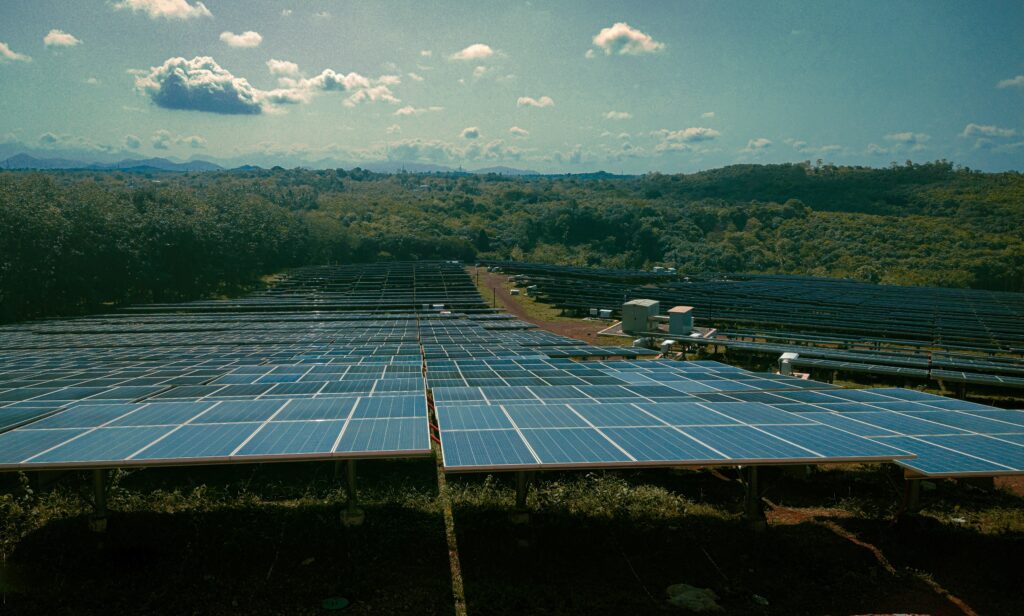Reimagining India’s Energy Security Amid New Risks
India’s energy strategy must adapt to rising climate, geopolitical, and infrastructure risks threatening long-term security and resilience.
In January 2023, India’s Petroleum and Natural Gas Minister Hardeep Singh Puri proudly outlined the country’s four-pronged energy security strategy: diversifying energy supplies, expanding domestic exploration and production, promoting alternate energy sources, and advancing the energy transition via gas, green hydrogen, and electric mobility. This framework has guided India through volatile global energy markets and underpinned its transition away from fossil fuel dependence.
As India expands its renewable energy portfolio and scales green hydrogen initiatives, emerging risks – physical, temporal, and geopolitical – are reshaping the context in which energy security is being pursued. Evidence from recent national and international developments suggests that a broader framing of energy security could be beneficial, one that incorporates spatial and temporal dimensions of risk.
Emerging risk landscape
India’s clean energy transition is happening fast. As of early 2025, the country has installed over 217 gigawatts (GW) of non-fossil fuel capacity, including nearly 98 GW of solar and 48 GW of wind energy. However, the geography of this transition poses its own risks. Over 60% of India’s large-scale solar and wind projects are concentrated in just three states – Gujarat, Rajasthan, and Tamil Nadu. This spatial clustering may increase the system’s vulnerability to extreme weather events and geopolitical tensions, including war on the western border of India and emerging hybrid threats such as drone attacks or cyber intrusions. These risks are not hypothetical. Policy briefs, including those from the German Council on Foreign Relations, emphasise the importance of democracies safeguarding critical energy infrastructure from climate-induced and conflict-related disruptions.
Over 60% of India’s large-scale solar and wind projects are concentrated in just three states – Gujarat, Rajasthan, and Tamil Nadu.
While the current strategy addresses energy availability and transition pathways, the evolving security environment underscores the need to assess how concentrated, long-term infrastructure is vulnerable to emerging threats, and whether new institutional mechanisms may be necessary.

Temporal risks and long-term uncertainty
Renewable infrastructure typically involves long-term siting decisions and technological lock-ins lasting 25–30 years. In the context of accelerating climate variability and geopolitical volatility, these long lifespans may introduce new forms of risk. Heatwaves, flooding, and rising sea levels are already affecting infrastructure resilience in several Indian states and cities. Integrating forward-looking risk assessments into siting, design, localisation, and investment decisions may enhance the robustness of India’s clean energy transition.
Integrating forward-looking risk assessments into siting, design, localisation, and investment decisions may enhance the robustness of India’s clean energy transition.
Global trends reinforce this need. According to the International Energy Agency Renewables 2024 report, while renewable deployment is accelerating, key challenges – including integration delays, extreme weather disruptions, and regulatory uncertainty – continue to constrain long-term energy security in many regions. India may face similar constraints if resilience is not embedded into future project planning and implementation across scale.
Local-level risks and socio-political fragility
Megawatts matter – but so does the human terrain behind them. Alongside national-level risks, localised challenges such as theft of solar panels and wind turbine parts, land-use conflicts, and compensation disputes have occasionally disrupted renewable energy operations. These risks underscore the importance of integrating equity, social, legal, and governance dimensions into energy infrastructure planning. Mechanisms for benefit-sharing, grievance redressal, and land security could support smoother deployment and sustained operation.
Comparative insights and strategic alignment
Several international actors have begun adapting their energy security frameworks to account for new vulnerabilities. The European Union has updated its energy security strategy to explicitly include resilience to climate risks and hybrid threats. Similarly, the U.S. Department of Energy has begun mapping grid vulnerabilities to extreme weather and physical sabotage.
India’s ongoing initiatives – including the Draft National Energy Policy and the Green Hydrogen Mission – demonstrate an orientation toward innovation and low-carbon transformation. However, these instruments currently do not comprehensively address spatial concentration or long-term systemic risks. Exploring how such considerations could be better integrated may enhance policy coherence and adaptive capacity.
Institutional options
A dedicated National Energy Resilience Observatory – perhaps under NITI Aayog, or the Ministry of Power, or New and Renewable Energy – could serve as a nodal body. Such a platform could support horizon scanning for emerging threats, develop methodologies for disruption modelling, and contribute to resilience standards for energy infrastructure. International experience suggests that coordinated monitoring and scenario-based planning can improve long-term preparedness and reduce system-level fragility.
Expanding the framework: toward a fifth dimension
India’s four-plank energy security strategy has provided a strong foundation for progress. However, emerging evidence points to the potential value of considering a fifth dimension focused on strategic resilience and risk anticipation. This could include:
- Encouraging geospatial diversification of renewable energy assets.
- Developing risk-mapping protocols that consider climate, conflict, and socio-political factors.
- Expanding support for distributed energy systems, including microgrids and rooftop solar.
- Integrating resilience considerations into procurement, infrastructure design, and power purchase agreements.
These directions are not prescriptive but could serve as areas for further dialogue, planning, and piloting. Enhancing energy resilience does not require abandoning existing priorities but rather supplementing them with frameworks that reflect the complexity of present and future risks.
India stands at a pivotal moment in its energy journey. As the world moves toward a low-carbon future, energy security will be shaped not only by supply and technology but also by resilience to change. Integrating spatial and temporal risks into strategic planning may help safeguard the gains of India’s transition and position it as a leader in energy governance attuned to 21st-century challenges.
